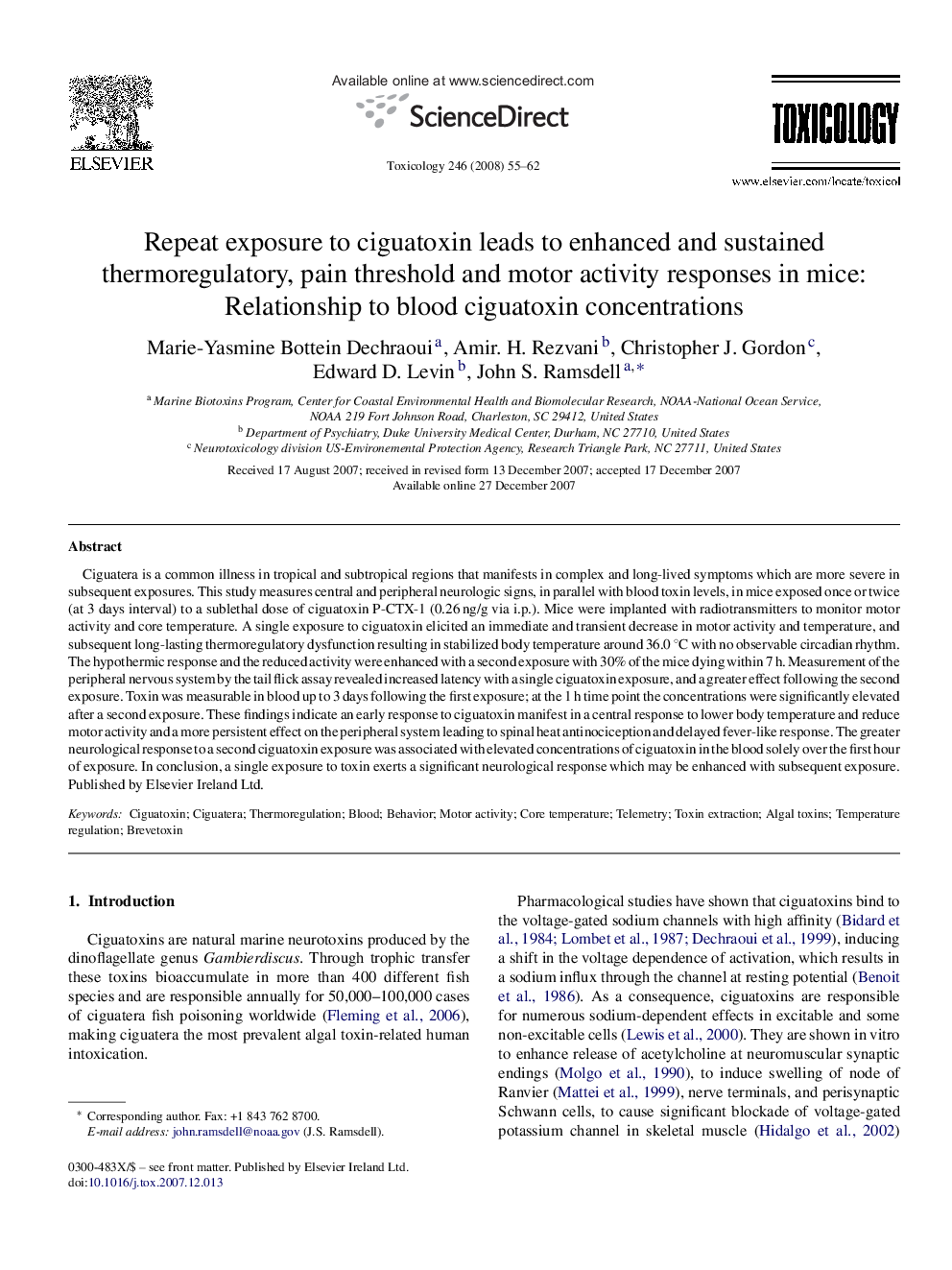| Article ID | Journal | Published Year | Pages | File Type |
|---|---|---|---|---|
| 2597479 | Toxicology | 2008 | 8 Pages |
Ciguatera is a common illness in tropical and subtropical regions that manifests in complex and long-lived symptoms which are more severe in subsequent exposures. This study measures central and peripheral neurologic signs, in parallel with blood toxin levels, in mice exposed once or twice (at 3 days interval) to a sublethal dose of ciguatoxin P-CTX-1 (0.26 ng/g via i.p.). Mice were implanted with radiotransmitters to monitor motor activity and core temperature. A single exposure to ciguatoxin elicited an immediate and transient decrease in motor activity and temperature, and subsequent long-lasting thermoregulatory dysfunction resulting in stabilized body temperature around 36.0 °C with no observable circadian rhythm. The hypothermic response and the reduced activity were enhanced with a second exposure with 30% of the mice dying within 7 h. Measurement of the peripheral nervous system by the tail flick assay revealed increased latency with a single ciguatoxin exposure, and a greater effect following the second exposure. Toxin was measurable in blood up to 3 days following the first exposure; at the 1 h time point the concentrations were significantly elevated after a second exposure. These findings indicate an early response to ciguatoxin manifest in a central response to lower body temperature and reduce motor activity and a more persistent effect on the peripheral system leading to spinal heat antinociception and delayed fever-like response. The greater neurological response to a second ciguatoxin exposure was associated with elevated concentrations of ciguatoxin in the blood solely over the first hour of exposure. In conclusion, a single exposure to toxin exerts a significant neurological response which may be enhanced with subsequent exposure.
